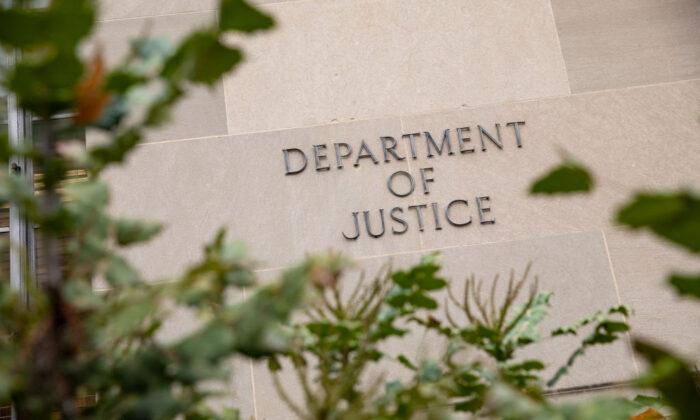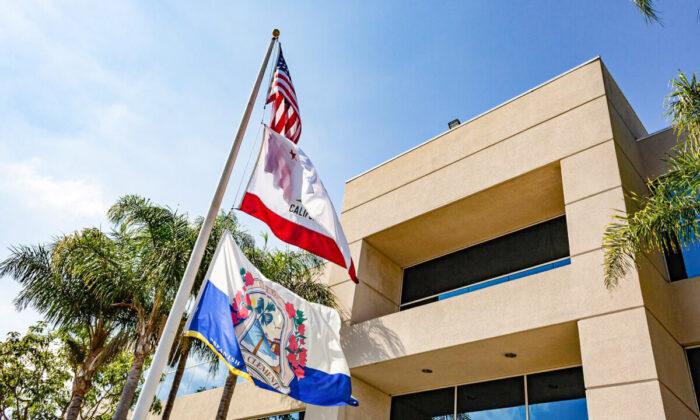SACRAMENTO, Calif.—California is paying reparations to survivors of state-sponsored forced or involuntary sterilizations that occurred over four decades ago, following a law that took effect Jan. 1.
“California is committed to confronting this dark chapter in the state’s past and addressing the impacts of this shameful history still being felt by Californians today,” Gov. Gavin Newsom said in a Dec. 31 statement. “While we can never fully make amends for what they’ve endured, the state will do all it can to ensure survivors of wrongful sterilization receive compensation.”
Assemblywoman Wendy Carrillo (D-Los Angeles), who proposed the forced sterilization compensation program in Assembly Bill 1007 in February 2020, secured a total of $7.5 million to fund the program.
Reparation applications will be accepted from now through Dec. 31, 2023. The program will evenly distribute $4.5 million among survivors who are still alive today—at least 600 individuals are eligible by estimate.
Aside from the $4.5 million to be distributed among the survivors, $2 million goes to the program’s administration and outreach efforts. The additional $1 million is earmarked for thousands of plaques to remember the wrongful sterilization victims.
According to the Sterilization and Social Justice Lab—a multi-institutional research team on sterilization in the United States—four attempts were previously made before a bill was passed in 2021 to compensate survivors of the state-sponsored sterilizations.
“The [Sterilization and Social Justice Lab] is gratified that this bill will provide long-awaited compensation to survivors of involuntary sterilization in California and will continue to inform this process and to highlight links between past and present experiences of reproductive injustice,” the organization’s website states.
Survivors can visit or reach out to the California Victim Compensation Board at 800-777-9229 or [email protected] to obtain an application.

Under state eugenics laws from 1909 through 1979, more than 20,000 Californians in state-run hospitals, homes, and institutions were sterilized, making up one-third of such sterilizations done in the United States, according to the state legislature.
The laws, enacted in 1909 and repealed in 1979, gave medical officials authorization to sterilize people who were identified as suffering from inheritable mental illnesses, abnormal mentality, “feeblemindedness,” “perversion,” and “the disease of syphilitic natures.”
According to Assembly Bill 3052, which established the compensation program, California eugenicists believed the sterilization program was an effective tool to prevent people unfit for parenthood to have children who might become “defectives” in society, thereby reducing those dependent on social welfare programs.
A University of Vermont study on eugenics found that, over the 70 years of state-sponsored sterilization, approximately 60 percent of the total sterilized patients were considered mentally ill by the authorities, and over 35 percent were considered mentally deficient.
Women and girls were sterilized 14 percent more than men and boys, according to the assembly bill.
Though the sterilization laws didn’t specifically target any racial or ethnic groups, according to the assembly bill, Latinos were sterilized 23 percent more than non-Latino patients, and Latinas were sterilized 59 percent more than non-Latina patients.
Between 1965 and 1975, at least 240 women, many of whom were of Mexican origin, were either coerced into postpartum sterilization or, in some cases, sterilized without informed consent at the Los Angeles County+University of Southern California Medical Center.
The total number of people who underwent sterilization by the eugenics laws remains unknown due to the confidentiality of patients’ records.
Between 2006 and 2010, 144 female inmates were sterilized—approximately 40 without consent—after giving birth, according to the audit.
“It’s scary to know that your life’s in someone’s hands and that they could just do whatever they want without your consent,” Crystal Nguyen, a survivor, told The Center for Investigative Reporting and The Young Turks in “Sterilized Behind Bars,” a documentary film about sterilizations in California prisons and correctional facilities.
“I felt literally less than a woman,” Nguyen said. “Oh my god, I can’t even explain emotionally—I cried, and I cried—they took part of my womanhood.”
Though former Gov. Gray Davis and Attorney General Bill Lockyer issued an apology in 2003 for the forced eugenics sterilizations, a reparation program was not available until now.
The California Senate also passed a resolution in 2003 expressing “profound regret” and addressed “past bigotry and intolerance” against persons with disabilities or others who were deemed “genetically unfit” by the eugenics movement.
Assemblywoman Wendy Carrillo declined to comment.





